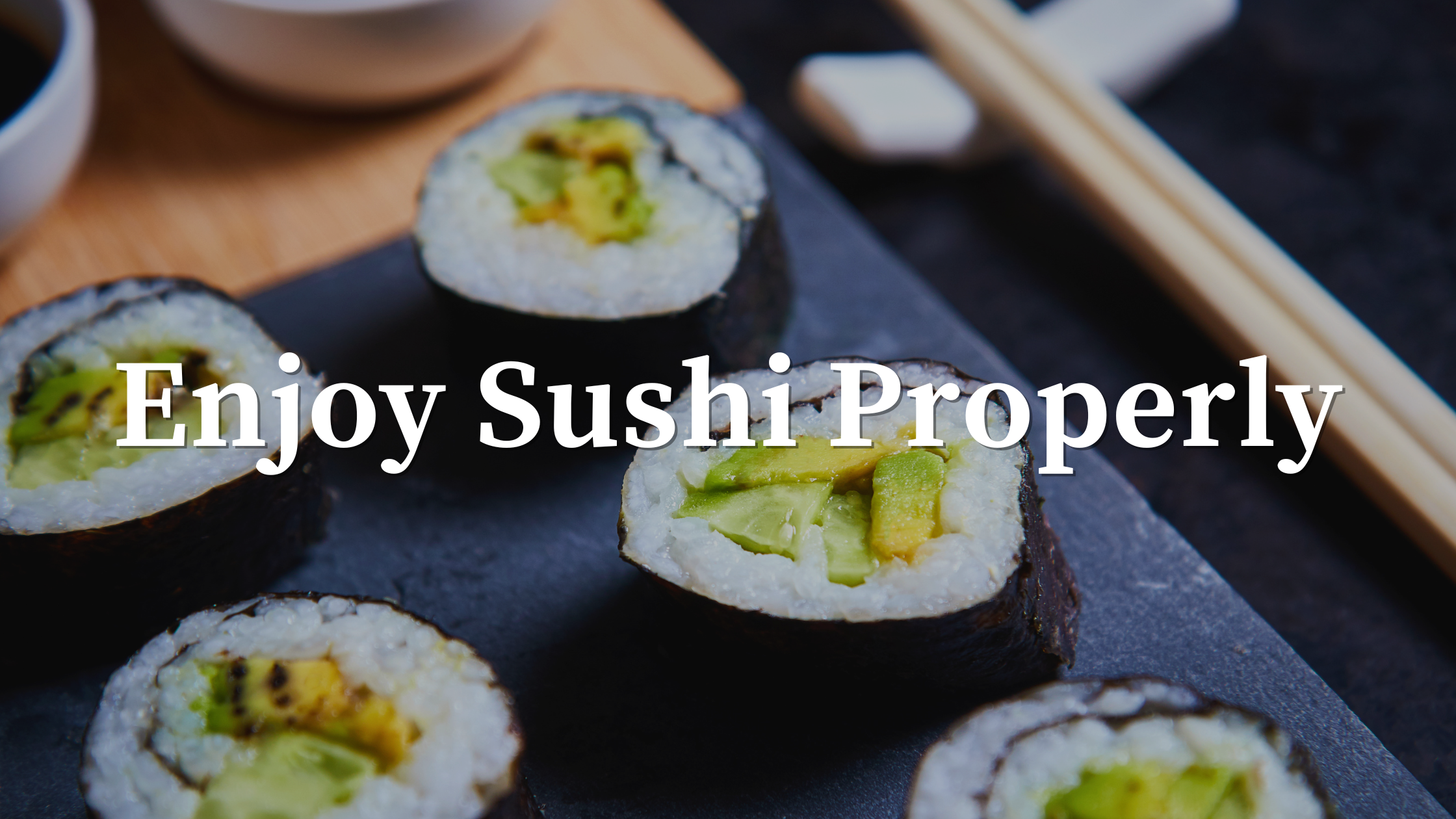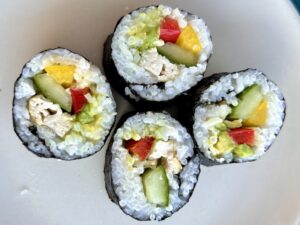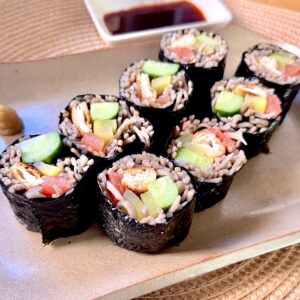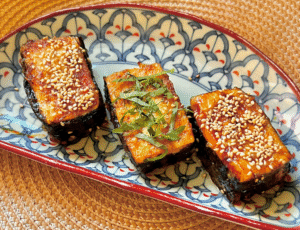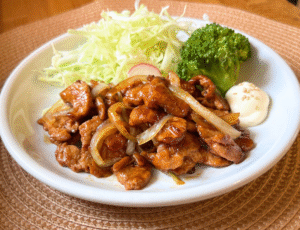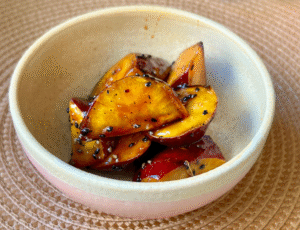Sushi is one of Japan’s most iconic dishes and is loved all around the world.
When enjoying sushi in Japan, there are a few unique customs that make the experience more natural and enjoyable.
Here’s a guide, especially helpful for vegans—on how to appreciate sushi respectfully while feeling comfortable.
Eating with chopsticks or hands is fine
You can eat sushi with chopsticks or with clean hands.
Using your fingers often helps keep the sushi intact, and it feels more natural, especially with nigiri.
How to dip in soy sauce
Instead of dipping the rice side, lightly touch the soy sauce with the topping.
When rice absorbs too much soy sauce, the sushi can fall apart and taste overly salty.
One bite is ideal
Sushi is usually made in bite-sized portions.
If the piece is large (as is common with Western-style rolls), it’s perfectly fine to eat it in two bites.
The role of gari (pickled ginger)
Gari is meant to refresh your palate between pieces of sushi.
Naturally prepared gari is pale yellow or beige. Bright pink versions are often dyed and may contain animal-based coloring, so vegans might want to check the ingredients before eating.
However, gentle pink tones can also appear naturally when young ginger is used, as its red tips release color into the vinegar.
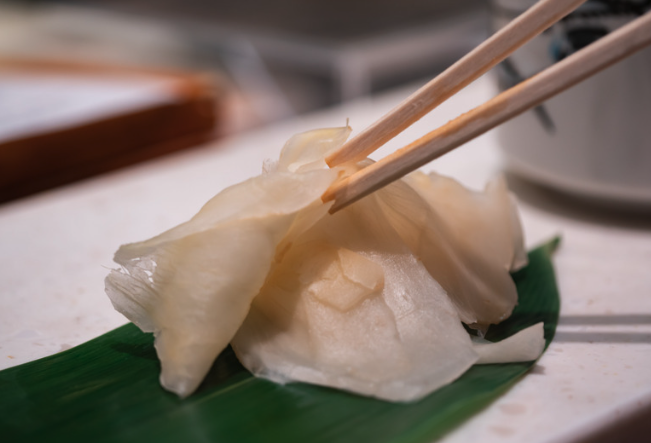
Finish with green tea
At sushi restaurants, you’ll often be served green tea, called agari.
It not only refreshes your mouth but is also said to aid digestion.
Styles often seen abroad but less common in Japan
In many countries, people enjoy sushi in ways that are a little different from Japan.
They’re not “wrong,” but knowing the local style helps you blend in more smoothly.
- Mixing a lot of wasabi directly into soy sauce
→ In Japan, wasabi is usually placed directly on the sushi in small amounts. - Dipping the whole piece deeply into soy sauce
→ A light dip is usually enough to bring out the flavors. - Taking sushi apart before eating
→ Since sushi is made as a harmony of rice and topping, it’s enjoyed as one piece.
Vegan-friendly sushi options
Today, vegan sushi is becoming more common both in Japan and abroad.
Popular plant-based toppings include avocado, cucumber, shiitake mushrooms, eggplant, pumpkin, and tofu.
Just keep in mind:
- Some ume (plum) or konbu (seaweed) rolls may be seasoned with bonito (fish) stock.
- Sushi vinegar occasionally contains honey.
If you’re unsure, it’s always a good idea to ask.
Sushi is more than just food, it’s also a cultural experience.
By understanding these customs, you can enjoy your meal more deeply and with peace of mind.
Vegan or not, sushi offers endless possibilities for appreciating Japan’s culinary tradition in your own style.

